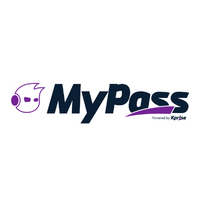The Future Of LMSs: Smart And Fair With Agentic AI And Flexible Pricing
Learning Management Systems (LMSs) have long been the heart of workplace training, but adoption often lags. Learners complain of rigid, outdated platforms that do not engage them while learning, while administrators face steep learning curves. To add to that, high licensing costs prevent many small and mid-sized businesses with tight budgets from accessing enterprise-grade tools. Two forces are changing this dynamic: agentic AI and credit-based pricing models. Together, they are reshaping the LMS into a more intelligent, accessible, and impactful tool for organizations of all sizes.
From Compliance To Experience
For years, LMSs were compliance-first. Their purpose was to store content, assign courses, and track completions. This satisfied audit requirements but rarely engaged employees. Today's workforce expects intuitive, consumer-like digital experiences. A static LMS feels antiquated compared to platforms like Netflix or Spotify. Engagement suffers, and organizations struggle to achieve ROI on training investments. The next generation of LMSs must deliver dynamic, personalized experiences—not just house content.
The Rise Of Agentic AI
AI has already entered learning through recommendation engines and chatbots, but agentic AI takes it further. It doesn't just assist—it acts. In an LMS, this means:
- Natural language interactions
An admin types or speaks, "I need a refresher on cybersecurity for sales," and the system instantly builds a microlearning path. - Adaptive content creation
Admins request, "Build an onboarding path for new managers," and the LMS curates and even generates new material. - Continuous optimization
Learner data feeds back into the system, refining recommendations automatically. - Dynamic reports
Admins can talk to the LMS via text or voice to generate dynamic reports.
This shift transforms the LMS from a passive repository to an intelligent learning partner.
Lowering Barriers To Adoption
One of the biggest hurdles in LMS rollouts is adoption. Complex admin interfaces discourage use, while learners get lost in catalogs. Agentic AI reduces friction across the board:
- Admins complete tasks by simply talking to the system.
- Learners access content through simple prompts instead of endless menus.
- Organizations roll out training faster, with minimal onboarding.
The result: higher course completion rates, less admin overhead, and greater learner satisfaction.
The Pricing Problem
Even with better technology, many organizations face a hidden barrier: pricing. Traditional LMS vendors lock clients into annual licenses, often tied to user counts. This model has clear flaws:
- Companies pay for inactive users.
- Small businesses and nonprofits are priced out.
- Seasonal industries (retail, hospitality) waste money on unused licenses.
A credit-based pricing model addresses these challenges. Instead of paying a flat annual fee, organizations purchase credits that can be spent as needed—on course access, AI features, or reporting. Benefits include:
- Fairness
Pay only for actual usage. - Accessibility
Enterprise-grade tools become affordable for small teams. - Scalability
Training expands or contracts with the workforce size.
This model mirrors the flexibility of cloud computing, where businesses pay only for the resources they consume.
Democratizing Learning
Together, agentic AI and credit-based pricing push the LMS market toward democratization. They enable:
- Smarter systems that actively guide and adapt learning.
- Fairer economics that remove cost barriers for smaller organizations.
- Higher ROI from training that is both affordable and effective.
This matters in today's business climate, where agility and continuous upskilling are essential to competitiveness.
Measuring Impact: Beyond Completions With Agentic AI And Credit-Based Pricing
One of the most overlooked aspects of learning is measuring success. Traditional LMS metrics—such as course completions or time spent—provide limited insight into whether training actually drives performance. Organizations often struggle to connect learning investments with business outcomes.
Agentic AI opens the door to richer analytics. By tracking skill development, knowledge retention, and real-world application, it shifts the focus from activity to impact. Combined with credit-based pricing, organizations can clearly see which initiatives deliver ROI and adjust strategies accordingly. This data-driven approach ensures training is not only delivered efficiently but also aligned with organizational goals.
Ultimately, these innovations signal a larger trend: the LMS is no longer just about compliance—it is becoming a strategic enabler of workforce growth and adaptability.
Conclusion
The LMS has entered a new era. Compliance and record-keeping are no longer enough. Organizations need platforms that are intelligent, intuitive, and accessible. Agentic AI delivers smarter learning experiences, while credit-based pricing ensures fairness and flexibility. Together, they promise to redefine corporate learning, making training not just a requirement but a driver of organizational success.








![AI Agents In eLearning: Practical Guide To Application, Integration, And Success [eBook Launch]](https://cdn.elearningindustry.com/wp-content/uploads/2025/05/Agentic-AI-In-LD-The-Ultimate-Guide.png)
